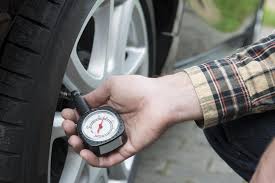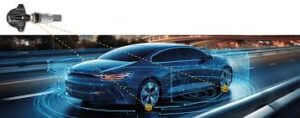Blog
“The Evolution of TPMS: From Luxury to Standard Feature”
The Evolution of TPMS: From Luxury to Standard Feature
Tire Pressure Monitoring Systems (TPMS) have transformed from a luxury add-on for premium vehicles to a standard feature in modern cars. Over the past few decades, advancements in technology and increasing safety regulations have played a significant role in this evolution. This article explores the journey of TPMS, its significance, and how it became an integral part of automotive safety.
The Early Days of TPMS
The concept of monitoring tire pressure began in the 1980s, primarily in high-end vehicles. Early TPMS systems were a luxury feature, aimed at enhancing convenience and safety for drivers of premium brands such as Porsche and Mercedes-Benz.
Early Innovations:
- 1986: Porsche introduced the first TPMS system in its 959 model. The system used wheel-mounted sensors to detect pressure drops, making it a pioneer in tire monitoring technology.
- 1990s: The technology slowly gained traction in the automotive industry, especially in sports and luxury cars, as manufacturers recognized its potential to improve safety and performance.
The Shift Toward Standardization
Several factors contributed to TPMS becoming a standard feature in vehicles:
1. Increased Awareness of Tire-Related Safety Issues
Low tire pressure can lead to poor handling, reduced fuel efficiency, and even catastrophic failures like tire blowouts. Research showing the correlation between tire pressure and accidents spurred consumer demand for better tire monitoring solutions.
2. The Firestone-Ford Recall Crisis (2000)
The massive recall of Firestone tires in the late 1990s and early 2000s brought tire safety into the spotlight. This crisis highlighted the need for better tire monitoring systems to prevent similar incidents in the future.
3. Government Regulations
In response to the Firestone-Ford crisis, governments introduced regulations mandating TPMS in vehicles:
- 2000: The United States passed the TREAD Act (Transportation Recall Enhancement, Accountability, and Documentation Act), requiring all new passenger vehicles to include TPMS by 2007.
- 2009: The European Union followed suit with legislation requiring TPMS in all new vehicles by 2014.
- Other Markets: Countries like Japan, South Korea, and China also adopted similar regulations, accelerating global adoption.

Advancements in TPMS Technology
As TPMS became a legal requirement, the technology evolved to meet the needs of a broader market. Two main types of systems emerged:
Direct TPMS
- Uses sensors in each tire to measure air pressure and transmit real-time data to the vehicle’s onboard system.
- Provides accurate, specific readings but is more expensive to manufacture and maintain.
Indirect TPMS
- Uses the vehicle’s ABS (Anti-lock Braking System) and wheel speed sensors to estimate tire pressure by comparing rotational speeds.
- More cost-effective but less precise than direct systems.
From Optional Feature to Standard Equipment
The transition of TPMS from a luxury feature to standard equipment parallels the trajectory of other safety technologies, such as airbags and anti-lock brakes. Today, TPMS is:
- Standardized in Most Regions: Nearly all new passenger cars, SUVs, and light trucks come equipped with TPMS.
- Affordable and Accessible: Mass production and advancements in sensor technology have significantly reduced costs.
- Integrated with Advanced Systems: TPMS is often part of broader vehicle safety systems, including traction control and automated driving technologies.
Benefits of Widespread TPMS Adoption
The widespread adoption of TPMS has had profound benefits for drivers and the environment:
- Enhanced Safety: By alerting drivers to underinflated tires, TPMS reduces the risk of accidents caused by poor tire performance.
- Improved Fuel Efficiency: Properly inflated tires consume less fuel, saving money and reducing carbon emissions.
- Extended Tire Lifespan: TPMS helps prevent uneven wear and tear, increasing the durability of tires.

Challenges in Adoption
While TPMS has become a standard feature, challenges remain:
- Sensor Maintenance: TPMS sensors require periodic battery replacement, adding to maintenance costs.
- System Calibration: Frequent recalibration is necessary, especially after tire rotations or replacements.
- Cost for Older Vehicles: Retrofitting older cars with TPMS can be expensive, limiting its accessibility for all drivers.
The Future of TPMS
As vehicles become more advanced, TPMS technology is expected to continue evolving:
- Integration with IoT: Smart TPMS systems will provide real-time alerts via mobile apps, enabling drivers to monitor tire pressure remotely.
- Enhanced Accuracy: Next-generation sensors will offer even more precise data, including temperature and wear indicators.
- Role in Autonomous Vehicles: In self-driving cars, TPMS will play a crucial role in maintaining optimal performance and safety.
Conclusion
The evolution of TPMS from a luxury feature to a standard safety system highlights the automotive industry’s commitment to improving road safety and driving efficiency. As technology advances, TPMS will continue to enhance the driving experience while contributing to safer, greener roads worldwide.
For more insights on automotive innovations, visit RegalXmuse.com.


